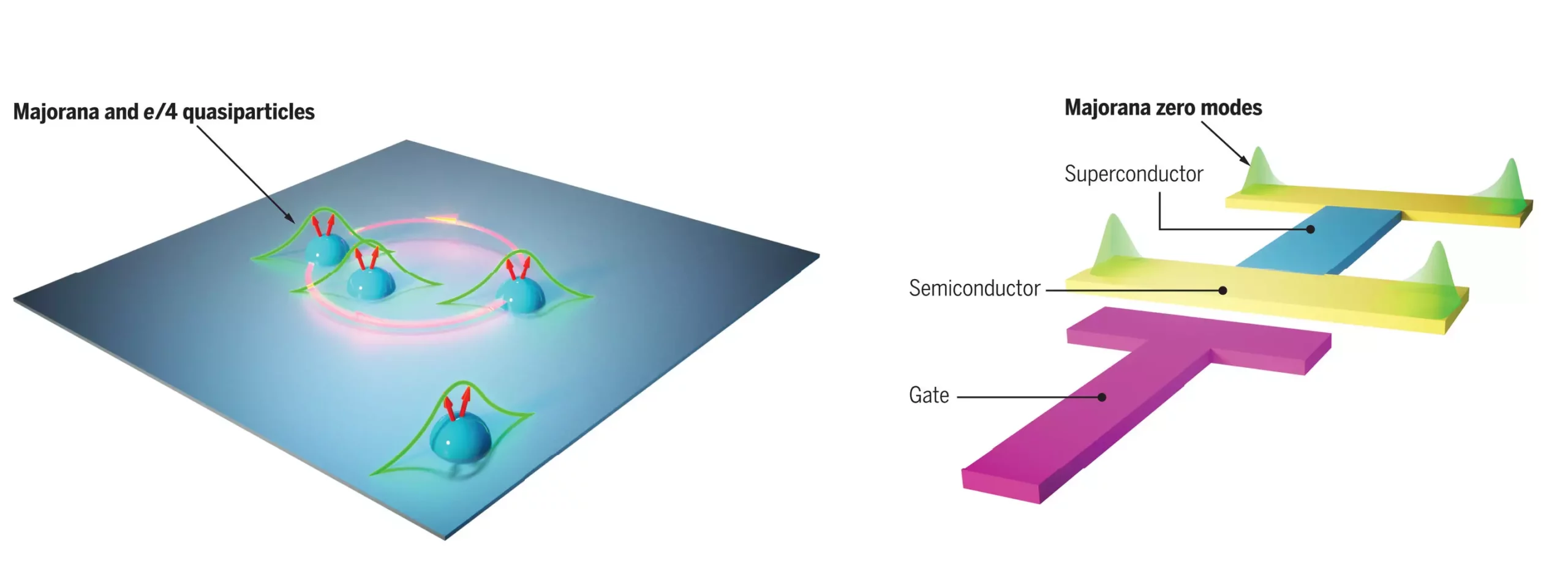Majoranas, named after an Italian theoretical physicist, are fascinating quasiparticles that hold the potential to revolutionize quantum computing systems. These particles, which can exist in specific types of superconductors and in a quantum state of matter known as a spin liquid, have characteristics that are entirely different from the electrons that make up their composition. In some materials, interactions between electrons can give rise to emergent particles like Majoranas. These particles have caught the attention of scientists due to the unique capabilities they exhibit, such as efficient methods for storing and transferring information across great distances.
A team of researchers from prominent institutions such as Harvard University, Princeton University, and the Free University of Berlin, led by Harvard’s Amir Yacoby, has embarked on a journey to delve into the behavior of Majoranas. Their recent review paper in Science sheds light on the state of Majorana research and the progress made in the past decade. The researchers are dedicated to identifying materials that can host Majoranas separately, paving the way for a deeper understanding of these particles’ potential applications and their impact on fundamental scientific phenomena.
The researchers focus on four promising platforms for isolating and measuring Majoranas: nanowires, the fractional quantum Hall effect, topological materials, and Josephson junctions. Nanowires, thin rods made of a semiconducting material, have emerged as a leading option for realizing Majorana-based quantum systems. The fractional quantum Hall effect, which occurs under a strong magnetic field, provides another avenue for creating an environment conducive to Majoranas. Many topological materials are also potential hosts for Majoranas due to their unique structure. Additionally, Josephson junctions, consisting of two superconductors separated by a normal piece of metal or a semiconductor, offer a promising setting for Majoranas to thrive.
Amidst the quest for Majoranas, researchers face challenges in identifying the materials that can harbor these elusive particles and understanding the intricacies of their behavior. The team’s efforts are aligned with the priorities of the Quantum Science Center (QSC), a DOE National Quantum Information Science Research Center, as they collaborate with other QSC members to develop new theoretical and experimental methodologies for screening materials for Majoranas. By leveraging cutting-edge technologies within the quantum science community, the researchers aim to unlock the full potential of Majoranas in advancing quantum computing systems.
As the research on Majoranas continues to evolve, scientists are hopeful that unraveling the mysteries of these quasiparticles will open up new possibilities in the field of quantum computing. By pushing the boundaries of knowledge and technology, researchers are paving the way for groundbreaking innovations that could revolutionize the way we store and process information. The quest for Majoranas stands as a testament to human curiosity and the relentless pursuit of scientific advancement in the realm of quantum physics.


Leave a Reply